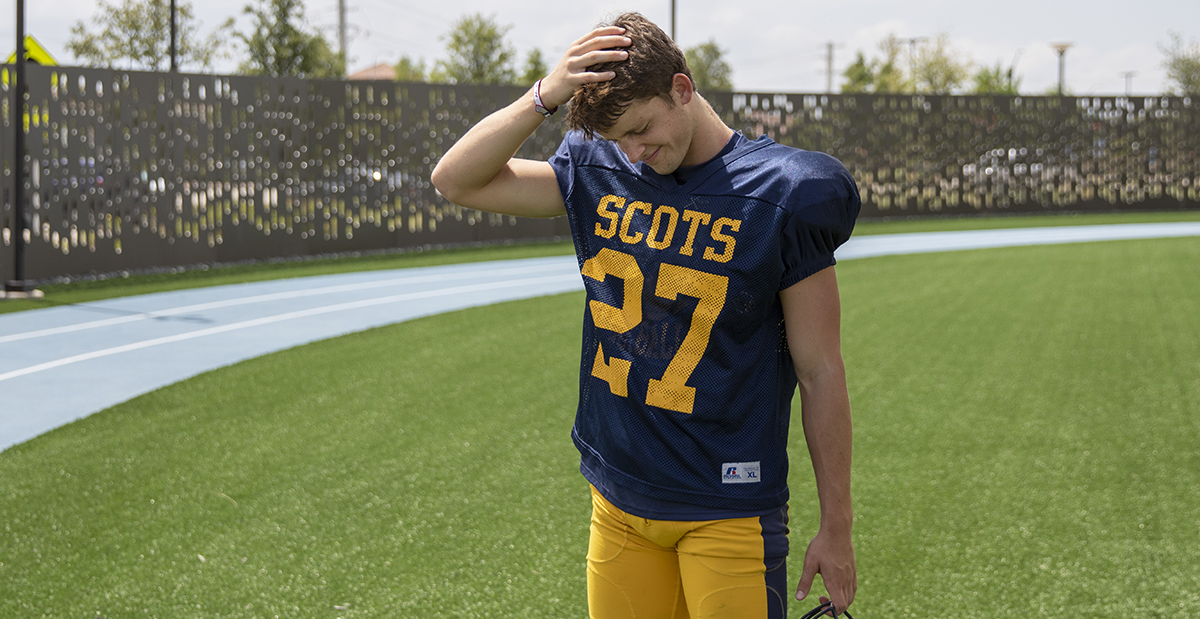
Oct 06, 2020 / Research & Innovation
Who Would Keep Playing After a Sport-Related Concussion?
In a collaborative effort with our partners at UT Southwestern Medical Center and other local organizations, our specialists continue to evaluate data in a large registry of patients with sport-related concussions. The North Texas Concussion Network Prospective Registry (ConTex), collects information including demographics (age, sex, etc.), sport played, and details about the concussion and recovery.
In nearly every review of this registry, our Sports Medicine research team has observed a trend in athletes with a concussion returning to play on the same day as their injury. Earlier data suggested that 4 in 10 athletes returned to play on the same day, despite legislation and educational efforts that strongly advise against returning to practice or competition before clearance by a medical professional.
In the most recent review, more than half of the athletes (14 – 18 years old) played again on the same day after their injury. “I am concerned that efforts at the national, state and local levels are not working,” says Shane M. Miller, M.D., investigator and sports medicine physician. Other research has shown that playing the same day is correlated with a greater number of symptoms and a longer time to recovery in youth athletes. Miller and his colleagues actively advocate for immediate removal from play if a concussion is suspected, not returning to play the same day and until cleared by a medical professional.
Return to Play by Sport
When looking at all sports, the rate of return on the same day is more than 5 in 10 athletes. But here are some interesting findings when you look at the sports with the highest rates:
Unfortunately, this is not only a problem in one sport or age group but spans across all youth sports, so we must continue to educate athletes, coaches and parents on the importance of coming out of the game/practice immediately and not returning to play. For now, we’ll continue to promote that athletes, parents and coaches take concussions and concussion education seriously. Current guidelines and best practices include annual or bi-annual training for coaches, athletes and athletic trainers. We hope parents also find ways to educate themselves. We have many resources on our website for review and sharing.
To request educational resources or information about an event for your team or organization, contact jonathan.heydrick@tsrh.org.
This study, “Can Demographics Predict which Athletes Continue to Play following a Sport-Related Concussion?” was selected as a poster presentation at the virtual 2020 annual meeting of the American Academy of Pediatrics. Lead investigator is Hannah Worrall, M.P.H., who coordinates sport-related concussion research at Scottish Rite for Children in Frisco, Texas.
In nearly every review of this registry, our Sports Medicine research team has observed a trend in athletes with a concussion returning to play on the same day as their injury. Earlier data suggested that 4 in 10 athletes returned to play on the same day, despite legislation and educational efforts that strongly advise against returning to practice or competition before clearance by a medical professional.
In the most recent review, more than half of the athletes (14 – 18 years old) played again on the same day after their injury. “I am concerned that efforts at the national, state and local levels are not working,” says Shane M. Miller, M.D., investigator and sports medicine physician. Other research has shown that playing the same day is correlated with a greater number of symptoms and a longer time to recovery in youth athletes. Miller and his colleagues actively advocate for immediate removal from play if a concussion is suspected, not returning to play the same day and until cleared by a medical professional.
Return to Play by Sport
When looking at all sports, the rate of return on the same day is more than 5 in 10 athletes. But here are some interesting findings when you look at the sports with the highest rates:
- Cheerleading 70.6%
- Volleyball 60.0%
- Football 58.4%
- Soccer 50.6%
- Basketball 48.1%
Unfortunately, this is not only a problem in one sport or age group but spans across all youth sports, so we must continue to educate athletes, coaches and parents on the importance of coming out of the game/practice immediately and not returning to play. For now, we’ll continue to promote that athletes, parents and coaches take concussions and concussion education seriously. Current guidelines and best practices include annual or bi-annual training for coaches, athletes and athletic trainers. We hope parents also find ways to educate themselves. We have many resources on our website for review and sharing.
To request educational resources or information about an event for your team or organization, contact jonathan.heydrick@tsrh.org.
This study, “Can Demographics Predict which Athletes Continue to Play following a Sport-Related Concussion?” was selected as a poster presentation at the virtual 2020 annual meeting of the American Academy of Pediatrics. Lead investigator is Hannah Worrall, M.P.H., who coordinates sport-related concussion research at Scottish Rite for Children in Frisco, Texas.



